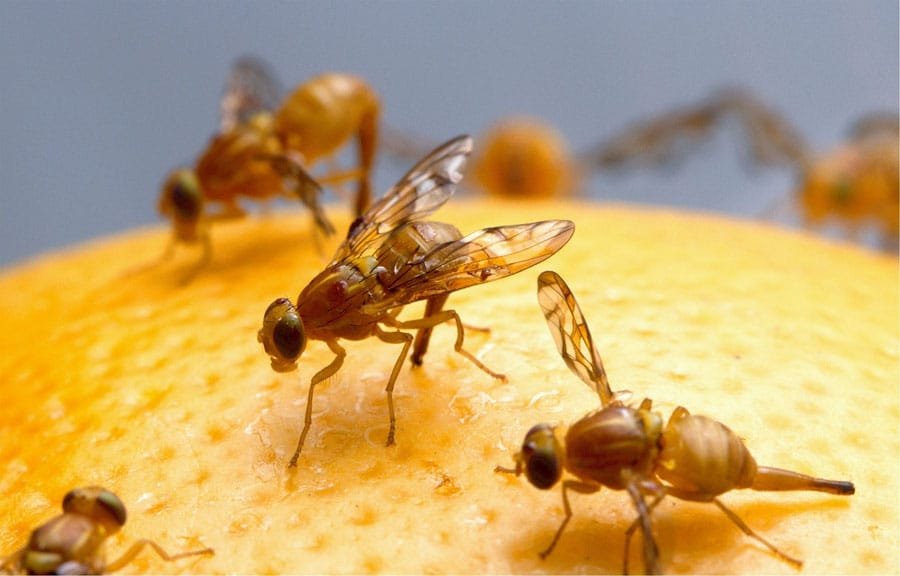Fly Infestation
Having trouble with a fly infestation in your home or business can cause serious problems, as they not only cause a nuisance but also bring health risks with them including salmonella and E-coli. Eraserpest have the knowledge to find a solution and effectively control flies so you know you can trust us to deal with any size of fly infestation.
Get your FREE quote today

How to get rid of Flies?
The best way to get rid of flies is to use a professional fly control treatment to make sure the fly infestation is under follow control as quickly and effectively as possible.
Our fly pest control treatment follows a 5-step programme with a 6th as an optional extra.
- Carry out a professional survey to work out what fly species you have and the level of infestation.
- Advise you on any good housekeeping measures to keep flies away.
- Advise on proofing measures to stop the flies gaining access and carry out the necessary work.
- Use the most effective treatments to control the flies.
- Monitor by keeping in contact with you and or further inspections to ensure the fly population does not come back.
Using our specialist machinery, we can mist either:
– A biocide effective against bacteria and viruses through anywhere that contamination could pose a risk to you.
– A highly effective odour control product which will get rid of any smells the flies or maggots may have left.
If you have a fly infestation in your house or business, then the answer is making sure you contact Eraserpest who will be more than happy to advise you through the process. We provide fly treatments in houses, businesses and the agricultural sector.
What are the different species of Flies commonly found as a pest in the UK?
Bluebottle Flies (Calliphora Vomitoria)
Bluebottle flies are sometimes called a blow fly. They are around 10-14mm long and the head and thorax are dull grey, and the abdomen is metallic blue with black markings with the whole body and legs covered with bristle like black hair. They are attracted to rotting organic material and faeces and will lay their eggs in these too which makes them known to carry diseases. Once the maggots hatch from the eggs they feed on the decaying matter they were born in. After a few days they will move off to somewhere dry and burrow into soil or similar matter to form into brown cocoons before hatching 2-3 weeks later, although during cold weather they can hibernate until the temperature rises.
Common House Flies (Musca Domestica)
Common house flies are dull grey roughly 6-8mm long with four dark stripes on their thorax (the mid-section of its body). House flies usually lay eggs on faeces or in general waste. The maggots are white and can grow up to 12mm long, once fully grown they then go into their pupal stage and make a dark brown cocoon before emerging as an adult house fly which could then travel over a mile to find a suitable egg laying site although generally this is far closer.
Cluster Flies (Pollena Rudis)
Cluster flies can also be known as grass flies or attic flies. They are approximately 6-10mm long and have short golden coloured hairs on their thorax as well as stripes behind the head. Cluster flies are typically slow moving and as the name suggests large numbers of the fly’s cluster, usually around windows and in attics or lofts attempting to stay warm and hibernate for the winter. They lay their eggs near the earthworm’s burrows and once hatched the larvae then feed on the worms.
Drain Flies (Psychodidae)
Drain flies sometimes also known as sink flies, filter flies and sewer gnats are between 1-2mm long. They have furry wings and bodies which are black or brown. Drain flies breed in drains, sewers and soil contaminated with sewage, said to be harmless they can be very annoying. The larvae of drain worms live in the drains and feed on bacteria and are transparent with black heads and are between 4-5mm long. The first step to treating drain flies is to use a good drain cleaning product.
Fruit Flies (Drosophila Melanogaster)
Fruit flies are also known as vinegar flies which are approximately 2-3mm long. The fruit fly is a yellow-brown colour with red eyes and tends to hover. Commonly found in breweries, fermenting residues in pubs and fruit orchards or in fruit. They lay their eggs near the surface of organic materials, fermented food, empty bottles and sometimes drains. The eggs are around 0.5mm long and hatch after 12 hours. The best way to get rid of fruit flies is with fruit fly traps, these can be made at home or brought as part of a treatment programme from Eraserpest.
Lacewings (Chrysoperia Carnea)
Lacewings are between 10-15mm long. They have a light green in colour and weak fliers. The lacewing fly feeds off pollen and nectar although their larvae have the nickname of aphid lions and predate aphids and other plant eating insects. They will not bite or sting humans and are best left alone.
If you have a fly problem and want to protect yourself or customers against the threat flies can bring then be sure to contact Eraserpest who will advise you on the best treatment.
How much does fly pest control cost?
For a quote on fly pest control, do not hesitate to contact us via email at contact@eraserpest.com or call us on 07572 458216.
How much does fly pest control cost?
For a quote on fly pest control, do not hesitate to contact us via email at contact@eraserpest.com or call us on 07572 458216.
